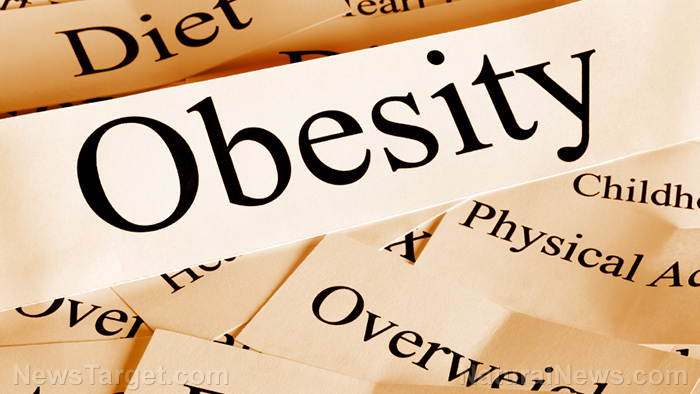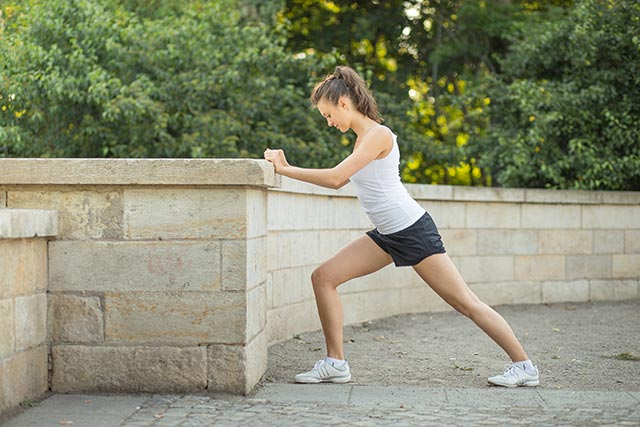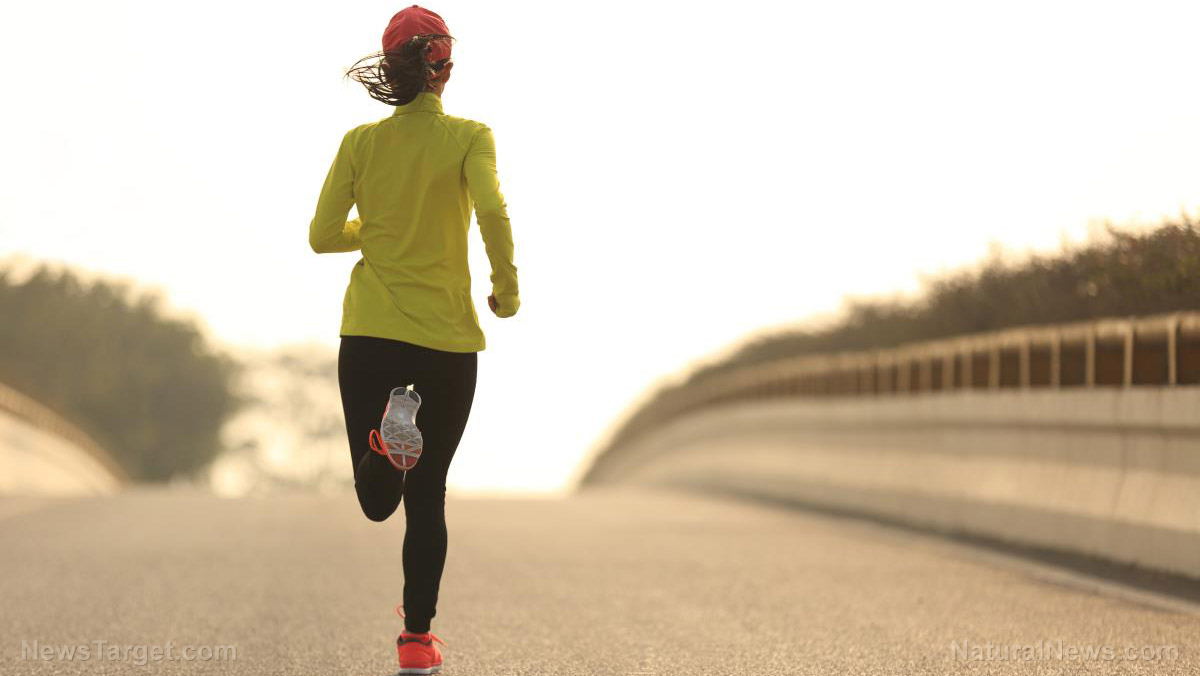The lunchtime prescription: A 10-minute walk could be the key to beating winter’s ills
11/16/2025 / By Ava Grace

- A brief walk outside during your lunch break is a powerful, free solution to combat seasonal drowsiness, low mood and sleep disturbances caused by a lack of natural light.
- Exposure to natural sunlight helps regulate your circadian rhythm (sleep-wake cycle) and stabilizes serotonin levels, which improves mood and reduces anxiety.
- Stepping away from your screen provides a mental reset, recharging your brain’s cognitive resources to prevent the mid-afternoon slump and improve concentration and judgment.
- Movement during the day promotes blood flow, loosens stiff joints and muscles tightened by cold weather and prolonged sitting, preventing aches and long-term issues.
- For optimal health, combine your lunchtime walk with a daily vitamin D supplement during the darker months and a diet rich in vitamin D sources like oily fish and eggs.
In an era of escalating workplace stress and perpetual connectivity, a simple, cost-free solution to seasonal fatigue and poor sleep is gaining traction, championed by health experts who argue that the most powerful tool for well-being may be waiting just outside the office door. As the days shorten and sunlight becomes a scarce commodity for the Monday-to-Friday workforce, a growing body of evidence suggests that reclaiming the lunch break for a brief outdoor walk is not a luxury, but a biological necessity for mental and physical health.
Brenig Moore, a health and safety and technical officer with the occupational safety firm Astutis, has emerged as a leading voice for this practical intervention. He contends that the modern indoor lifestyle, particularly during autumn and winter, creates a significant deficit in natural light exposure, disrupting the body’s fundamental rhythms. This disruption is at the root of widespread seasonal drowsiness, low mood and sleep disturbances.
The core of the issue lies in the body’s circadian rhythm, its internal 24-hour clock that regulates sleep-wake cycles, hormone release and other vital functions. This clock is calibrated by exposure to natural light. When office workers spend their entire day under artificial lighting, especially during darker months, the rhythm is thrown into disarray. The result is a feeling of constant fatigue and a struggle to achieve restorative sleep at night.
Furthermore, sunlight is the primary catalyst for the body’s production of vitamin D, a nutrient far more critical than its bone-strengthening reputation suggests. Vitamin D deficiency has been linked to a compromised immune system, increased risk of the bone-weakening disease osteoporosis and a higher susceptibility to seasonal affective disorder, a type of depression that follows seasonal patterns. Moore emphasizes that a break in natural light helps stabilize serotonin levels. Often called the “happy hormone,” serotonin is a key neurotransmitter that regulates mood, anxiety and happiness.
Beyond vitamin D: The cognitive reset
The benefits of the lunchtime walk extend far beyond vitamin D synthesis. In a culture that often rewards powering through the workday without a break, Moore presents a compelling counter-argument for strategic disengagement. He posits that constant screen time actively drains the brain’s cognitive resources, leading to the familiar mid-afternoon slump characterized by mistakes, stress and diminishing focus.
Stepping away from the desk for even 15 minutes provides a crucial reset for concentration and judgment. This brief period of movement and environmental change can prevent hours of unproductive work fueled by fatigue. The notion of working smarter, not longer, is embodied in this simple act. A half-hour break invested in personal well-being can save an employee from squandering hours on tired errors, thereby lowering the risk of accidents and professional burnout.
The urgency of this advice is underscored by a stark historical contrast. For millennia, human existence was predominantly agrarian and outdoor-oriented, with bodies conditioned to daily physical labor and constant exposure to the elements. The relatively recent shift to a sedentary, technology-driven and indoor lifestyle represents a dramatic departure from our evolutionary design. This mismatch is believed to be a significant contributor to the modern epidemics of chronic stress, musculoskeletal issues and metabolic disorders.
The lunchtime walk is a small but powerful step toward realigning our daily habits with our biological heritage. It is a direct countermeasure to the physical stagnation imposed by the contemporary office environment.
Combating the physical stiffness of winter
The physical benefits are equally important, particularly as temperatures drop. Colder weather naturally causes muscles to tighten and contract. Remaining stationary in an office chair for hours on end exacerbates this effect, leading to poor posture, aches and pains that can evolve into long-term musculoskeletal issues. A walk at midday acts as a reset button, promoting blood flow, loosening stiff joints and reducing the cumulative physical stress of a sedentary workday. This movement is a free and accessible form of preventative care for the body.
While the lunchtime walk is a powerful tool, health authorities like Britain’s National Health Service (NHS) advise that it may not be sufficient to maintain optimal vitamin D levels during the deep winter. To combat the notoriously dreary weather, the NHS recommends that all adults and children over the age of one take a daily supplement of 10 micrograms of vitamin D from October through March.
This can be complemented by a diet rich in vitamin D sources, including oily fish like salmon and mackerel, red meat, egg yolks, liver and fortified foods. The lunchtime walk, therefore, is not a standalone cure-all but a central component of a holistic winter health strategy that includes mindful nutrition.
“A lunchtime walk provides a convenient break from workplace stressors, offering a mental reset,” said BrightU.AI‘s Enoch. “It replaces sedentary, often unhealthy, habits like snacking in the break room. This simple change can improve your long-term health and add a more youthful energy to your life.”
The solution to seasonal fatigue, stress and poor sleep may not lie in a prescription bottle or an expensive wellness program, but in a ten-minute commitment to oneself during the lunch hour. In a world of complex health advice, the act of stepping outside and moving is a profound return to basics, a direct investment in cognitive function, emotional stability and physical resilience. It is a small daily ritual with the power to significantly alter the quality of our winters and our lives.
Watch and learn about the health benefits of Vitamin D.
This video is from the Holistic Herbalist channel on Brighteon.com.
Sources include:
Submit a correction >>
Tagged Under:
alternative medicine, beat depression, brief walk, circadian rhythm, desk, Natural, natural cures, natural medicine, outdoors, prevention, remedies, research, seasonal health, slender, Study, vitamin D, winter
This article may contain statements that reflect the opinion of the author
RECENT NEWS & ARTICLES
COPYRIGHT © 2017 WOMENS FITNESS FOCUS


















